- The costumes, with their silks and lace and ample shapes, are typical of the fashion of the last third of the 17th century. Here, we find the artist's soft and luminous palette, with great attention paid to textures and atmospheric effects.
- The general mood and atmosphere is that of refined and carefree entertainment characteristic of the "Scènes Galantes," which depict elegant scenes of aristocratic life, often outdoors, blending love, music, and melancholy.
- The composition of the painting, the arrangement of the figures, and the landscape in the background clearly evoke the artistic conventions of this period; behind the apparent lightness, a certain romantic melancholy often shines through.
The Watteau School generally refers to the artistic influence exerted by Jean-Antoine Watteau (1684–1721), a major French painter of the early 18th century, associated with the Rococo style. Although he did not found a "school" in the institutional sense, his work inspired many contemporary and later artists, thus forming a stylistic or aesthetic "school." It should be recalled that the 1981 Marcus Decree is very clear on the use of the term "school of," which can only apply to a work executed during the artist's lifetime or within 50 years of their death. We have shown above that our painting indeed captures all the aesthetic attributes of the period in question. The restoration of the painting in our studio has, moreover, confirmed that it is indeed a work executed in the first third of the 17th century.
H x W = 45 x 29 cm
H x W (with frame) = 56 x 44 cm
Vintage gilded wood frame


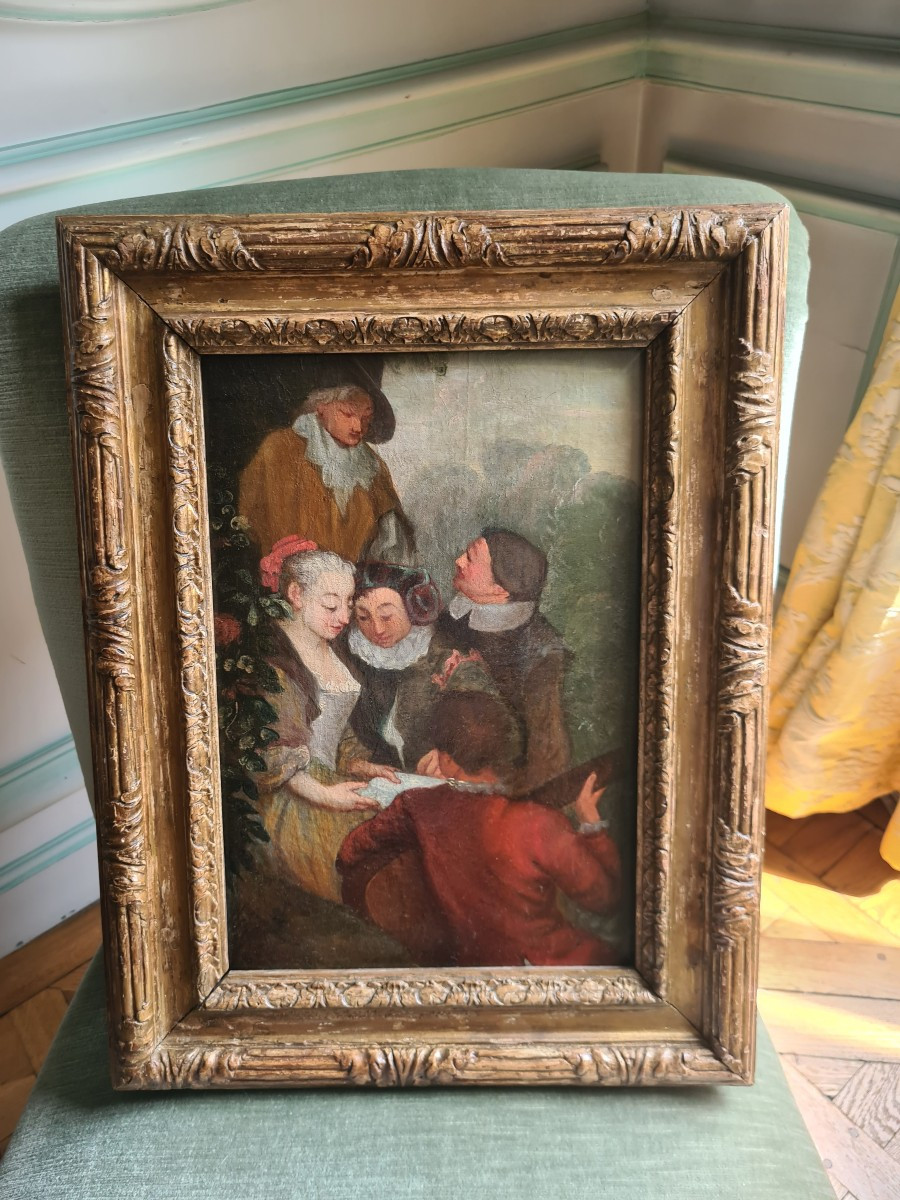










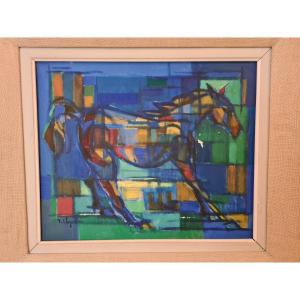





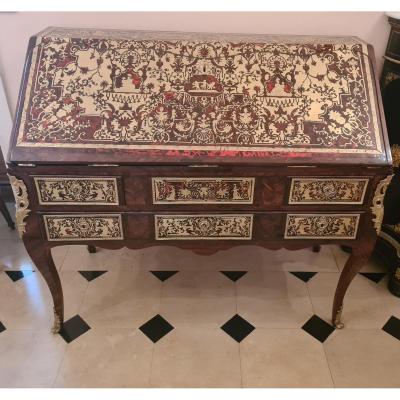
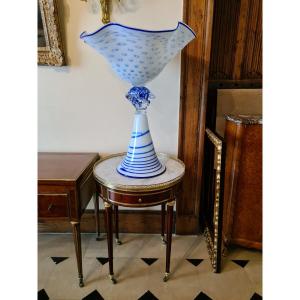

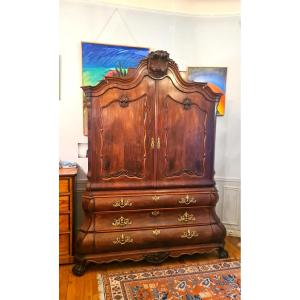



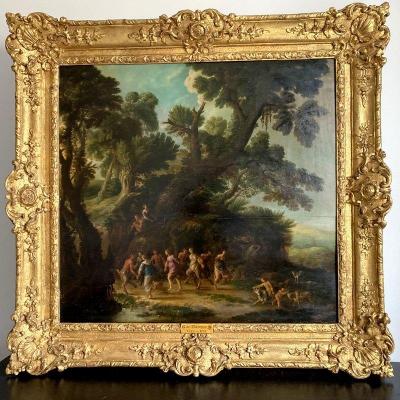

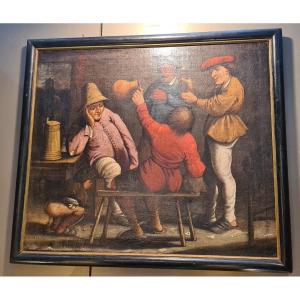
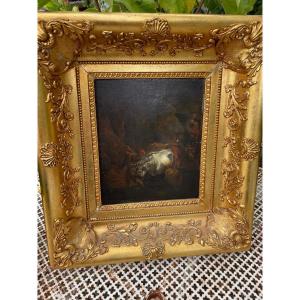
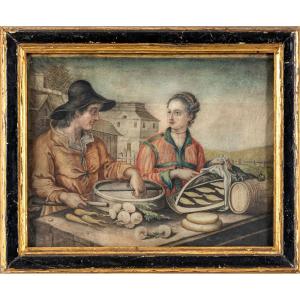



 Le Magazine de PROANTIC
Le Magazine de PROANTIC TRÉSORS Magazine
TRÉSORS Magazine Rivista Artiquariato
Rivista Artiquariato